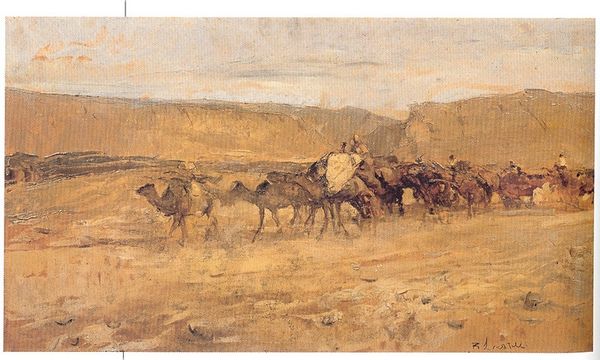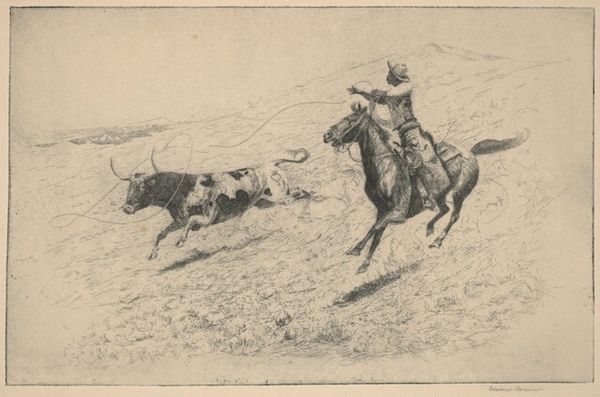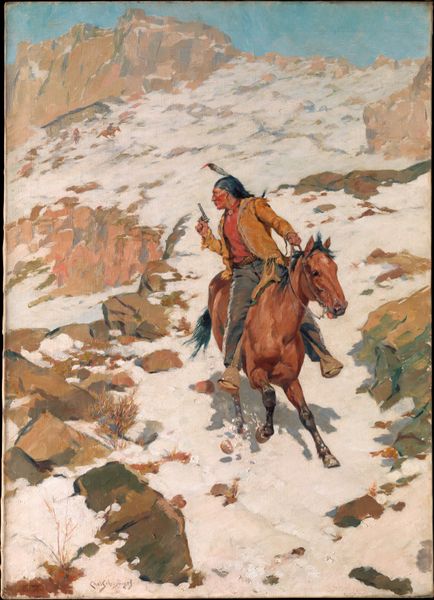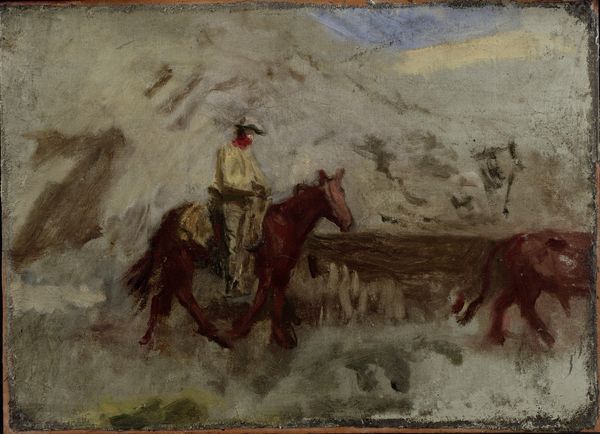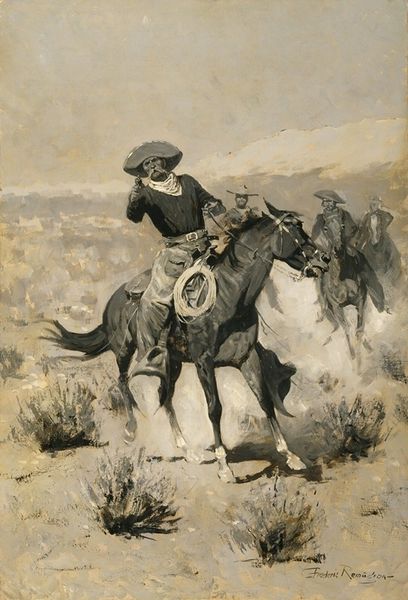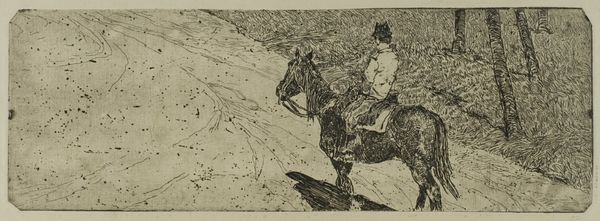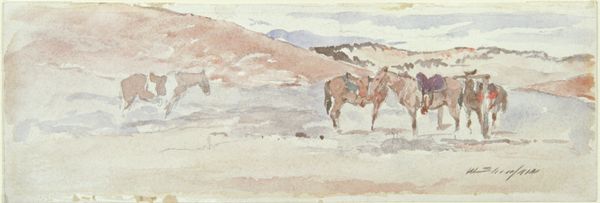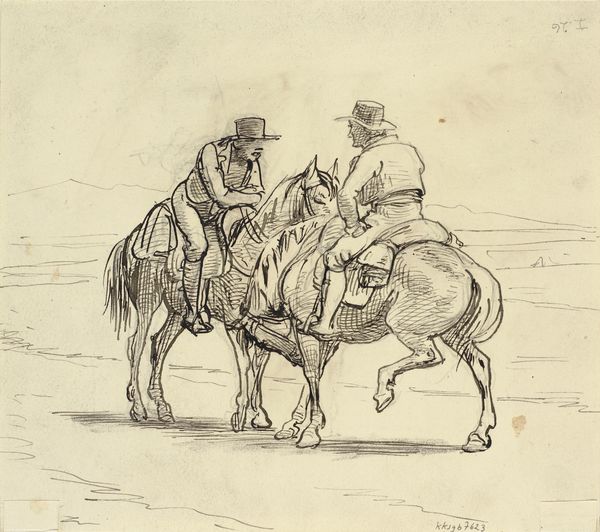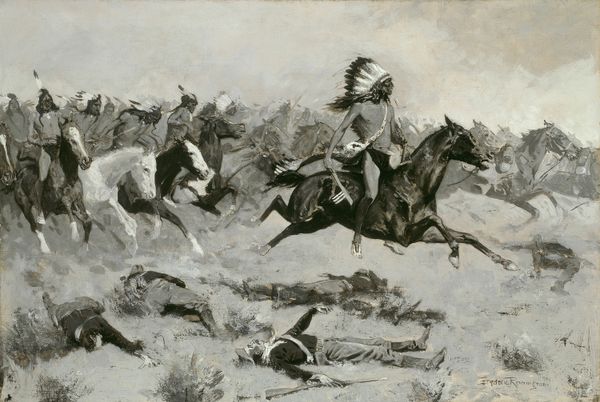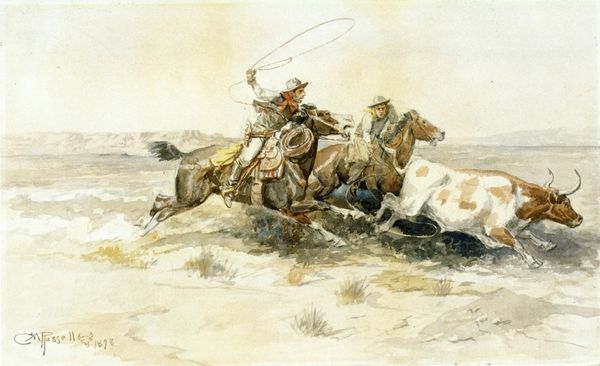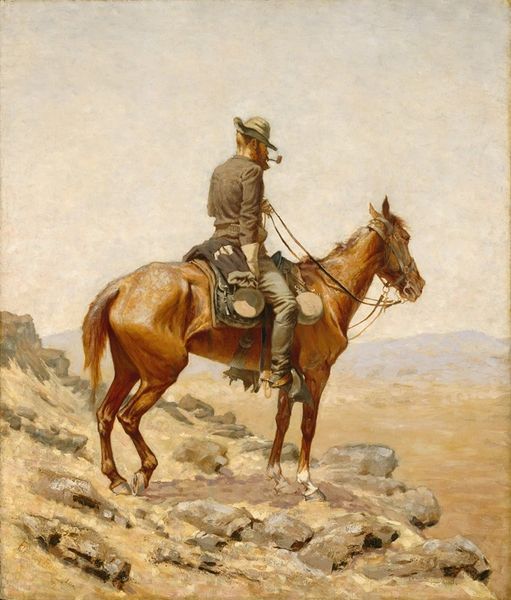
Dimensions: 101.9 × 69.2 cm (40 1/8 × 27 1/4 in.)
Copyright: Public Domain
Curator: Looking at Frederic Remington's oil painting, "Ceremony of the Fastest Horse," thought to have been created around 1900, I’m immediately struck by this gray landscape. What's your first impression? Editor: Bleak, almost desolate. There’s a strange stillness, even with the horses appearing to gallop across the frame. And the skull in the lower right corner hints at something somber. The limited color palette feels almost manufactured. Curator: Indeed. I get the sense that the landscape itself becomes a character, almost oppressive. Knowing Remington, he uses the romantic narrative to highlight indigenous themes while simultaneously glorifying this notion of frontier life. It makes me reflect upon my relationship with history. Editor: Romanticism can certainly gloss over some harsher realities. For me, this raises questions about the commodification of the West. Remington became quite successful depicting this vanishing way of life for eastern audiences. And here, his means were oil paint, canvas, mass production, all fueling a popular desire for a carefully crafted version of events, a kind of conquest narrative even. The rapid industrialization back east meant people lost touch with primary means. Remington was there to mediate this loss through sentimental images. Curator: But there's undeniable skill involved, wouldn't you agree? The movement of the horses, the composition...they invite our eyes to a sense of romanticizing. Editor: Oh, absolutely. His ability to depict movement is exceptional. Yet I see the artifice in that realism. It is a curated, carefully managed vision crafted and constructed with intention. Even these natural pigments are, at their core, refined earth manipulated to produce an image that feels spontaneous, or even sublime, which leads me to ponder the costs of artistic fabrication, the resources involved, and the cultural weight such material carries. It becomes almost ethical to inquire what stories the production can’t tell us. Curator: I think that is beautiful, but ultimately, I love this piece. It sparks such a powerful dialogue. The canvas beckons us to challenge not only what Remington created but what meaning remains behind for each and all. Editor: Perhaps through scrutinizing material and historical complexities, and how these intersect with narrative and composition, can we be freed of romanticizing, even momentarily. To see, to really consider, as an important and ongoing part of our understanding this painting.
Comments
No comments
Be the first to comment and join the conversation on the ultimate creative platform.
